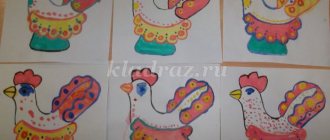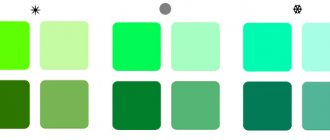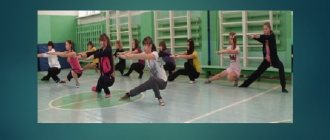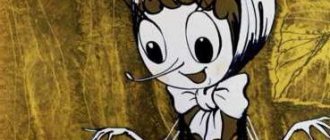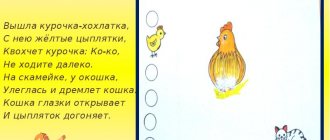Many craftswomen do not even suspect how specific patterns in Russian embroidery differ. I want to introduce you to information about what a specific color means and what mission it fulfills.
105 0
Russian folk embroidery is a style trend that covers a ninth part of the land. Such an area made it possible to create a variety of styles and motifs for every corner of the country. Even two neighboring villages boast special techniques in embroidering ornaments. Have you been on holidays or folk festivals? Then you definitely saw artists in clothes with folk patterns. If you collect them from all over the country, you will notice differences in each ethnic costume.
Before you make your own towel with Russian embroidery, study the characteristic images and colors used. Create a home amulet to protect your home or decorate a dress for a happy marriage.
Features of embroidery in different parts of Russia
Every corner of Russia, city, village has its own distinctive features of creating designs on things.
For example:
- In Chuvashia, 3 main thread colors are used: black, red, white. Moreover, each has its own meaning. Red is a symbol of the desire for something new, white speaks of purity, innocence, black is used to create a frame. A special feature is that when embroidering, no special devices are used to make the work easier.
Ornament on clothes
- It is worth mentioning that Slavic embroidery patterns are based mainly on geometric figures. Since the craftswoman dyed the threads herself, the process took a lot of time and was quite labor-intensive.
- In Karelia, the pattern most often had religious significance. The ornament is embroidered using red thread on white fabric. The center of the composition is animals and plants. It is extremely popular in Russia and Europe.
- In Mari El they use red thread when embroidering on homespun material. Patterns: geometric shapes, plants, animals. Trees were of particular importance - protection for the family.
- Tarusa technique - linen thread is used, and there is a special technique, white line and colored weave. Trees and plants are embroidered on things, resulting in pictures. The peculiarity is the absence of the wrong side. The technique is also known for embroidering a design on white fabric with white thread.
Chuvash symbolism
Features of Southerners
The southern part of Russia is characterized by the presence of geometric patterns on embroidery. In the Voronezh, Tambov, Oryol, Kursk, and Penza regions, craftswomen embroidered with white line, crosses, etc.
Embroidery with paintings
Particularly common are: counted satin stitch, colored interlace. The key element of both embroideries is the use of semi-transparent fabric under the base.
You may be interested in this. Quickly learn how to embroider large patterns with a cross.
Additional Information! The presence of such embroidery on clothes was evidence of a high level of family income.
Colored interlace
Color features of the areas:
- Ryazan is characterized by a blue pattern;
- in Smolensk embroideries, lemon, orange, red, and white colors on a gold background are more common;
- patterns of Tula and Kaluga are characterized by a red and white color scheme, interspersed with inserts of blue, cyan, green, and yellow;
- Kaliningrad is characterized by the use of a crimson background with a pattern of scarlet, white, green, and gold thread.
Important! Russian embroidery is one of the most developed arts in the creativity of the people. The main geometric shape is rhombus, square. They are embroidered with protrusions in the corners, diagonals, and spirals. Material: silk thread.
Northern traditions
In the Karelian Autonomous Soviet Socialist Republic, Vologda, Arkhangelsk, and Leningrad, the satin stitch technique, the use of oblique stitches, and painting are especially popular.
Ornament made in satin stitch
The full cross stitch technique was used to decorate amulets.
Cross pattern
Half-cross is a type of edging, the basis of a popular type of painting. Using small stitches in bright colors to create vibrant patterns. After creating the edging, the interior space is filled with various types of decorative seams.
The white stitching on the product looks elegant and attractive. It is based on the use of sparse, slightly translucent fabric. The presence of a dense snow-white plot on things showed status and a high level of family income.
White pattern
Video with master class lessons of such embroidery for beginners
- The video explains the main points to consider when doing cross stitch for beginners. What is included in the embroidery kit, how to use the pattern, how to thread the thread and where the work begins, see this lesson.
- Video tutorial on how to create an amulet - a bag in which a shrine or prayer is placed. This amulet is worn around the neck or pinned under clothing. The main embroidery motifs are earth signs.
- A detailed video tutorial will tell you how to create embroidery of initials in satin stitch. A drawing is applied to the fixed canvas. The outline is embroidered with a two-thread stitch, and the filling is done with a single-thread stitch. The main types of stitches are “back play” and French knot.
Embroidery is the oldest type of fabric decoration. A skillfully embroidered pattern turns any item into a real work of art. Now embroidery in Russian folk style decorates clothes and interiors. You can order embroidery on the website, or you can make a design yourself and transfer it to any product. Are you already familiar with embroidery? Tell us what techniques you know and what motifs you use in embroidering your products.
Peculiarities of perception of fine art
Ornament is perceived by humans as part of fine art. At different times, patterns on clothing were perceived differently. Previously, they showed a person’s class and level of well-being. The ornament also indicates the geographical location of the owner of the item.
Nowadays, the presence of embroidery on a thing shows the aesthetic component of the image. Embroidered clothing motifs appear at fashion shows every year.
Using the example of the history of satin stitch embroidery, one can trace the formation of society’s perception of this type of clothing decoration.
History of satin stitch embroidery
Satin embroidery is the use of the correct type of lines. The result is a pattern of shining, shiny threads. A person can admire such an ornament for a long time. The first such embroidery appeared about 2000 years ago.
The technique originated in China in the 6th century BC, at which time high-class residents were fond of decorating things using embroidery. Then a similar technique was used in Japan.
You might be interested in this Description of carpet embroidery techniques for beginners
Note! Looks especially good on silk fabric.
Then, as a result of the emergence and development of the Great Silk Road, the technique gained popularity in European countries. At this time, the fashion for unusual things was especially strong, so embroidery quickly spread across the continent.
At this time, embroidery became known in Rus'. At the same time, the fabric and possibilities for creating ornaments have improved. Most often, the schemes were used many times, passed on from generation to generation.
In modern society, diagrams are freely available on the Internet.
Peculiarities:
- Can be done by both a master and a beginner.
- Simple creation technique.
- Large assortment of species.
This ornament is considered one of the main types of art. If the stitch rules are followed correctly, the craftswoman will end up with excellent embroidery. However, creating a drawing requires attentiveness, perseverance, and concentration on the task.
This version of embroidery has come a long way, adapting, changing, but maintaining the basis - the presence of the radiance of the work.
Satin stitch pattern
LiveInternetLiveInternet
Russian embroidery is distinguished by an extraordinary variety of stitches and embroidery techniques. Each region (and sometimes district) had its own embroidery techniques, ornamental motifs, and color schemes.
Various types of seams used in Russian embroidery can be divided into two large groups:
— the first group includes embroidery done by counting the threads of the fabric;
- to the second group - along a free, pre-drawn contour.
The seams of the first group are called countable
, the seams of the second group are
free.
In addition, the seams can be transparent or solid.
Counted stitches were made by counting the threads of the fabric along the weft and warp, hence the names of the stitches. These include half-cross or painting, cross, set, goat, braid, counted stitch, etc.
In modern patterns, other seams are used - forward needle, braid, bias stitch.
In ancient times, double-sided seam painting
Example
He created both stripes with geometric patterns and complex plot compositions depicting a horse, leopard, bird, and man. The outline of the design was sewn with thin stitches running in different directions. The silhouette image looked like a delicate lace pattern.
[
more]
The cross appeared later than suture painting, around the first half of the 14th century, when drawings from city albums began to spread. To make it, seam patterns, painting and line embroidery were used. The cross stitch is performed much faster than painting and attracts with its density, grainy texture and bright decorative effect. The cross was successfully used to embroider towels, valances, and clothes. This embroidery was widely used in the Tambov and Ryazan regions. In addition to a simple cross, there is also a double cross , double-sided and one-sided ; in the Tambov region they embroider with a double-sided cross framed by four stitches, this is the Tambov cross .
Simple cross
Double cross
Double-sided cross
One sided cross
Tambov cross
Cross is the most common type of embroidery. It can be done either on canvas or on a pattern; the fabric should have a uniform weave of threads. Cross stitch is used in many ways: for finishing clothes or their parts, for decorating table linen and bed linen.
Kit
Goat seam
Pigtail seam
Counted stitch
Seams of the peoples of the Volga region - “oblique stitch”, asterisk, spiral
"oblique stitch"
“Diagonal stitch” is a blind one-sided counted seam. It is performed with inclined stitches of different inclinations and lengths, tightly adjacent to each other or spaced apart at some distance.
"spiral"
Star seam
Transparent seams are used to perform stitching work on a pre-prepared mesh. Such seams are called stitching, which is applied to a mesh obtained by pulling the fabric threads in two directions - along the weft and along the warp. Stitch patterns are not located on the surface of the fabric, but seem to change its structure.
Stitch patterns
Blind seams are used to work on the entire fabric. They are called embroidery. In addition to the embroidery stitches already discussed above, there are also embroideries that combine two types: embroidery along a free contour and counted stitches, for example Oryol spis, Vladimir stitches, where the cores of flowers embroidered in a random circle are filled with satin stitch cuttings of geometric shapes.
Oryol list
Vladimir seams
For patterns drawn with free hand movement, plant, animal and human motifs are used in a very conventional interpretation. Such patterns are made with contour and satin stitches.
Contour seams include: chain stitch, stem stitch, braid, goat, lace; for satin stitch - white satin stitch, Vladimir stitches, Aleksandrovskaya stitch, Russian satin stitch and satin embroidery.
Chain stitch
Stem seam
"Lace"
White surface
Alexandrovskaya smooth surface
Russian smooth surface
Old Russian facial and gold embroidery
This type of sewing has ecclesiastical origins. The legend about the life of the Mother of God says that she needed to create the curtain of the Temple of the Lord from purple and crimson.
Face sewing is a type of icon painting that has appeared since the birth of Christianity in Rus'. Performed using colored threads. Formed under the influence of Byzantium.
Gold embroidery also developed in Byzantium. In Kyiv in the 11th century, a school of gold embroidery appeared at the monastery, where lessons were held. In the 15th century, workshops of queens began to appear, where craftswomen honed their skills. The beginning of the 17th century was marked by rivalry between the workshops of famous people and merchants.
Face sewing
These sewing options make up the sacred part of the temple, like the frescoes. They have a certain symbolism of the presence of a deity.
Currently, the main task of masters is to preserve traditions in ancient art, achieve the level of a master, and observe church canons when working.
Gold embroidery
Ornaments of Slavic peoples and their designation
Protective embroidery of the Slavs, patterns and meaning:
- Bereginya is the image of a woman with her hands down. Protects and protects the family from troubles.
- Water - in the form of a zigzag, a wave, the border between Yavya and Navy. Gives immortality, brings knowledge.
- Ognevitsa is a talisman for an adult female body. Protects from bad words and evil deeds.
- Spiral - speaks of wisdom. Amulet from evil forces, the evil eye.
- Stribozhich - depicts the blades of a windmill. Protects from the elements, embroidered on work clothes.
- The woman in labor is a symbol of fertility and family well-being.
You might be interested in New monochrome cross stitch patterns
Rozhanitsa - embroidery pattern
Using patterns in embroidery
Russian embroidery in Rus' traditionally not only decorates clothes, towels, bedspreads and other linen products, but is also a talisman. The interweaving of patterns is by no means random. All symbols are in their place.
In addition, the color of the thread that is used also matters in embroidery. Let's consider some points:
- an embroidered rooster or horse in red or black colors is suitable to protect the baby;
- for successful activities, embroidery should be done in blue or golden-green tones;
- woolen embroidery is suitable if there are already some energy holes; it is done in the area of a person’s chakras;
- flax is used for peace; it is used to embroider trees, birds, stars or the sun;
- for women, black color should be used in embroidery to protect against infertility;
- for men – green (protects from wounds), blue (protects from the elements).
In addition, symbols are also used in embroidery - a cross (barrier and protection from evil), a star (heavenly fire), a circle (denotes fertility, abundance and motherhood) and others.
Thus, Russian embroidery is a whole set of knowledge that our ancestors used in ancient times, protecting themselves, their relatives and their clan.
Embroidery in Russian folk costume
It is also customary to embroider ornaments on folk costumes, which has been a talisman since ancient times.
Slavic protective embroidery is mainly located in the place where the body comes into contact with the environment:
- at the edge of the sleeve;
- at the bottom of the product;
- at the gate.
It is believed that the ornament will protect a person and improve health.
Children also wore things for their parents, which symbolized the presence of a connection between generations. There are many Russian fonts for machine embroidery.
Additional Information! From the age of 3, the child received his first shirt, which protected him. For example, a son gets a man's shirt.
Russian folk embroidery
Ideas for such embroidery with patterns
Now on the Internet you can find many pictures with patterns on the theme of Russian folk embroidery. You can create a diagram yourself, for example from any photograph. To understand how to draw Russian folk embroidery step by step and create a beautiful pattern on clothes and household items, we suggest that you familiarize yourself with the ideas of embroidery and a brief description of its implementation .
Russian folk embroidery on a towel
Most often, enterprises, hotels and restaurants use machine embroidery to apply logos, images and signs. Modern embroidery machines help you create any pattern quickly and efficiently. If you decide to create a product with your own hands, you can choose your favorite design on the Internet. To draw Russian folk embroidery on a towel yourself, first draw a sketch of the product with a design on a sheet of paper with a pencil . Next, transfer the finished design onto the fabric using carbon paper and start embroidering.
If you take a ready-made pattern, and the size of the pattern is too small, you need to divide it into equal squares and transfer the pattern onto paper with the same grid of squares , enlarging it the required number of times. If only part or half of a Russian folk embroidery pattern is given, it needs to be enlarged by cells and, folding the paper in half, transferred to the second half according to the pattern.
Embroidery in Russian folk costume
Our ancestors embroidered patterns not only on towels, bedspreads, napkins, but also on entire suits. And now the Russian folk pattern is coming back into fashion. Linen blouses and shirts, dresses and sundresses with unique patterns are recreated and take on a new life. -Embroidery on clothes will give the product a unique look.
- First check the fabric for shrinkage and the threads for color fastness.
- Transfer the design onto the fabric using carbon paper.
- Fasten the canvas tightly.
- Choose a needle with a small eye for a neater look.
- Start embroidering.
Fairy tale characters
The cross stitch pattern is the most common. If you want to decorate a baby blanket or towel with characters from a Russian folk tale, use cross and half-cross stitch.
- Choose your favorite scheme.
- Using a special marker, mark the canvas into 10 by 10 squares. It is more convenient to mark from the center.
- Select on the diagram where you will start embroidering, and insert the needle and thread. You can embroider from both the top and bottom.
- Embroider the design according to the diagram.
Beadwork
Embroidery with beads, beads, and rhinestones on certain areas of blouses, dresses or sundresses will look beautiful. Using your favorite bead embroidery pattern, you can get a beautiful pattern that will decorate the edge of the sleeve or the neck of the product. You will need beads of the required size, cotton threads or fishing line, canvas, needles and scissors.
- Select an embroidery pattern and transfer it onto the fabric using tracing paper.
- Sew the beads to the fabric according to the drawing.
- To ensure that the beads lie evenly, do not pull the thread too tightly.
Russian folk embroidery patterns
Using patterns of Russian folk embroidery, you can decorate accessories: handbags, wallets, gloves, scarves, etc. You can create a design with 3D embroidery, cross stitch, satin stitch, and ribbons. A handbag with hand embroidery will look impressive and is suitable for both everyday and evening outings.
- Using the diagram below, transfer it onto the fabric.
- Take the threads of the desired color and start embroidering.
- If desired, decorate the resulting pattern with rhinestones or beads.
Krestetsky stitch
Type of application: through ornament. Gained popularity since the 60s of the cities of the 19th century. The embroidery is done on a “broken needle” of a lace look, has a geometric pattern, is rich in decorations, and is varied - it differs from other types of lines.
The Krestetskaya factory has experienced several ups and downs. The Great Patriotic War, the change of power in the 90s - everything influenced the condition of the factory. Now its owner has changed, the task is to restore the museum, which opened in 1930. Used to decorate towels, blankets, sheets.
Features of the technology
Previously, lace was embroidered with thread pulled from the fabric. The color of the material determined the color of the ornament.
“White on white embroidery” - a brief description of the stitch. In this case, the checkered linen fabric is filled with a figured pattern of thin white threads. To create a stitch, longitudinal and transverse threads are pulled out, which turn the material into an openwork network. The threads are intertwined with a needle, creating a pattern.
Krestetskaya folk embroidery
Embroidery as a talisman
Surprisingly, Slavic embroidery, which was done mainly with a cross, was used as a talisman. This is very old embroidery. Every detail was filled with special meaning. The ornament is very diverse. Often they embroidered a woman surrounded by deer. It was Rod's mother. Very often it was embroidered on wedding clothes or on the clothes of babies to protect them from all sorts of misfortunes. But the ornament of Russian folk embroidery lelnik meant protection from all misfortunes.
It is interesting that when they embroidered with a cross with red thread on white fabric, it was a symbol of the earth, which had absorbed the life-giving energy of the sun.
Basic rules for choosing a pattern
When choosing an ornament, you need to carefully study the meanings of the symbols, as well as the color scheme. It is also recommended to rely on geographic location to support local craftswomen. Most often, girls prefer large patterns, while men pay attention to small symbols.
The article examines in detail the question of the meaning and history of the creation of traditional Russian embroidery. Nowadays, embroidery is more often done due to the race for fashion collections, but when choosing, it is recommended to pay attention to the history of the creation of the ornament. Slavic traditions of bead embroidery will help make your look attractive.
